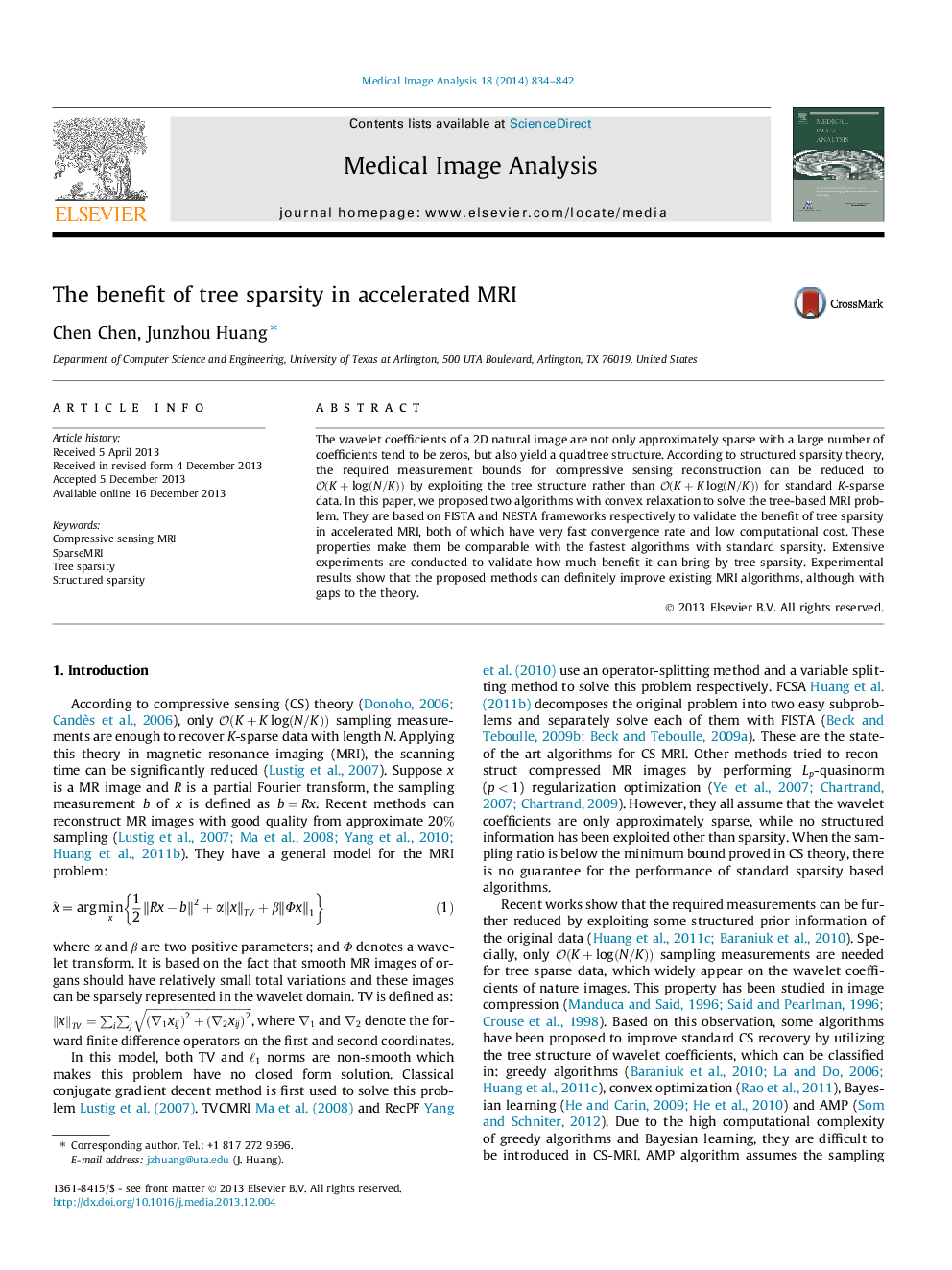| کد مقاله | کد نشریه | سال انتشار | مقاله انگلیسی | نسخه تمام متن |
|---|---|---|---|---|
| 445054 | 693118 | 2014 | 9 صفحه PDF | دانلود رایگان |

• The introduction of related work is extended to make our contributions clear.
• Two new algorithms are proposed to validate the algorithmic benefit of tree sparsity.
• The experiment section is substantially extended.
The wavelet coefficients of a 2D natural image are not only approximately sparse with a large number of coefficients tend to be zeros, but also yield a quadtree structure. According to structured sparsity theory, the required measurement bounds for compressive sensing reconstruction can be reduced to O(K+log(N/K))O(K+log(N/K)) by exploiting the tree structure rather than O(K+Klog(N/K))O(K+Klog(N/K)) for standard K-sparse data. In this paper, we proposed two algorithms with convex relaxation to solve the tree-based MRI problem. They are based on FISTA and NESTA frameworks respectively to validate the benefit of tree sparsity in accelerated MRI, both of which have very fast convergence rate and low computational cost. These properties make them be comparable with the fastest algorithms with standard sparsity. Extensive experiments are conducted to validate how much benefit it can bring by tree sparsity. Experimental results show that the proposed methods can definitely improve existing MRI algorithms, although with gaps to the theory.
Figure optionsDownload high-quality image (87 K)Download as PowerPoint slide
Journal: Medical Image Analysis - Volume 18, Issue 6, August 2014, Pages 834–842